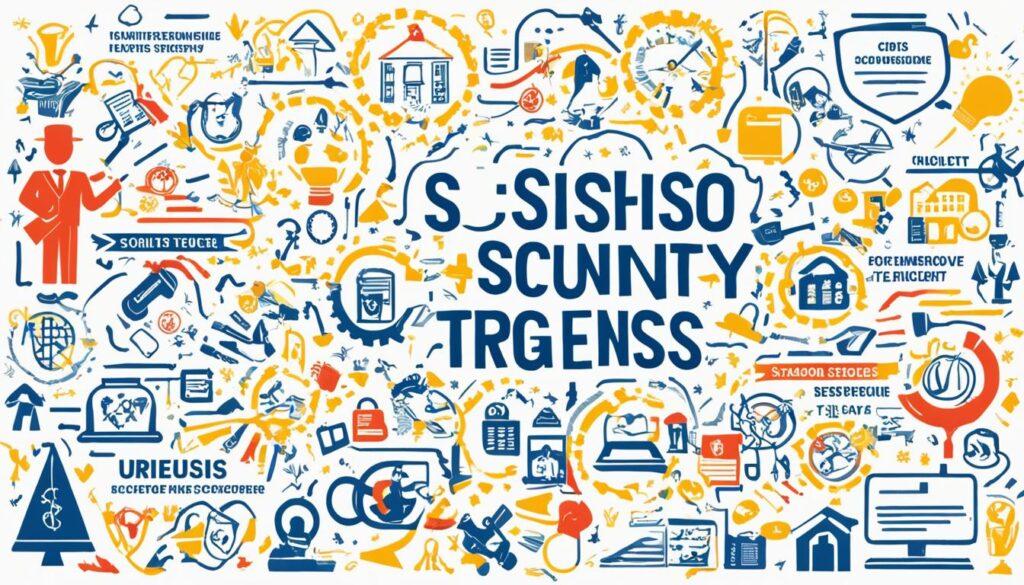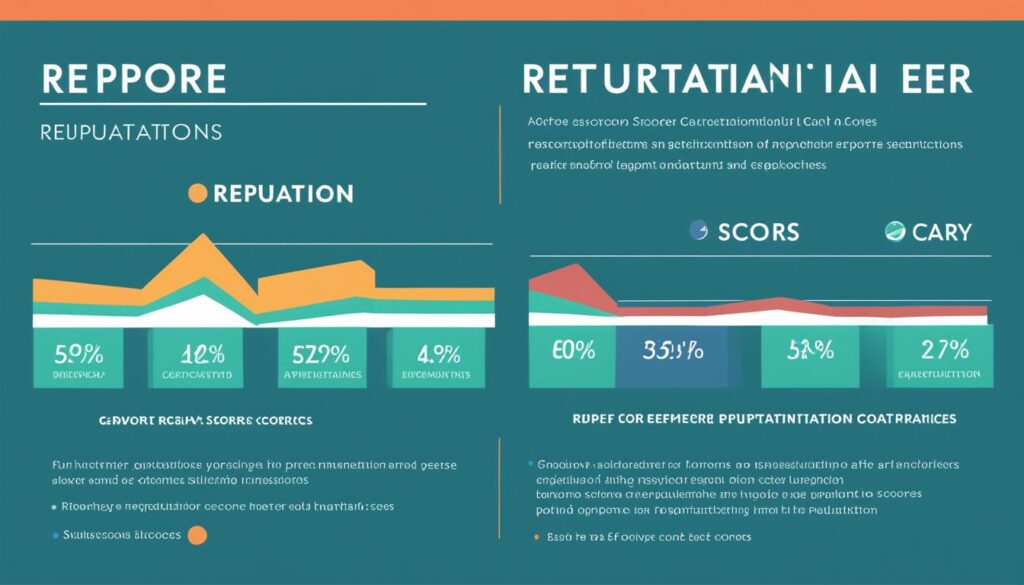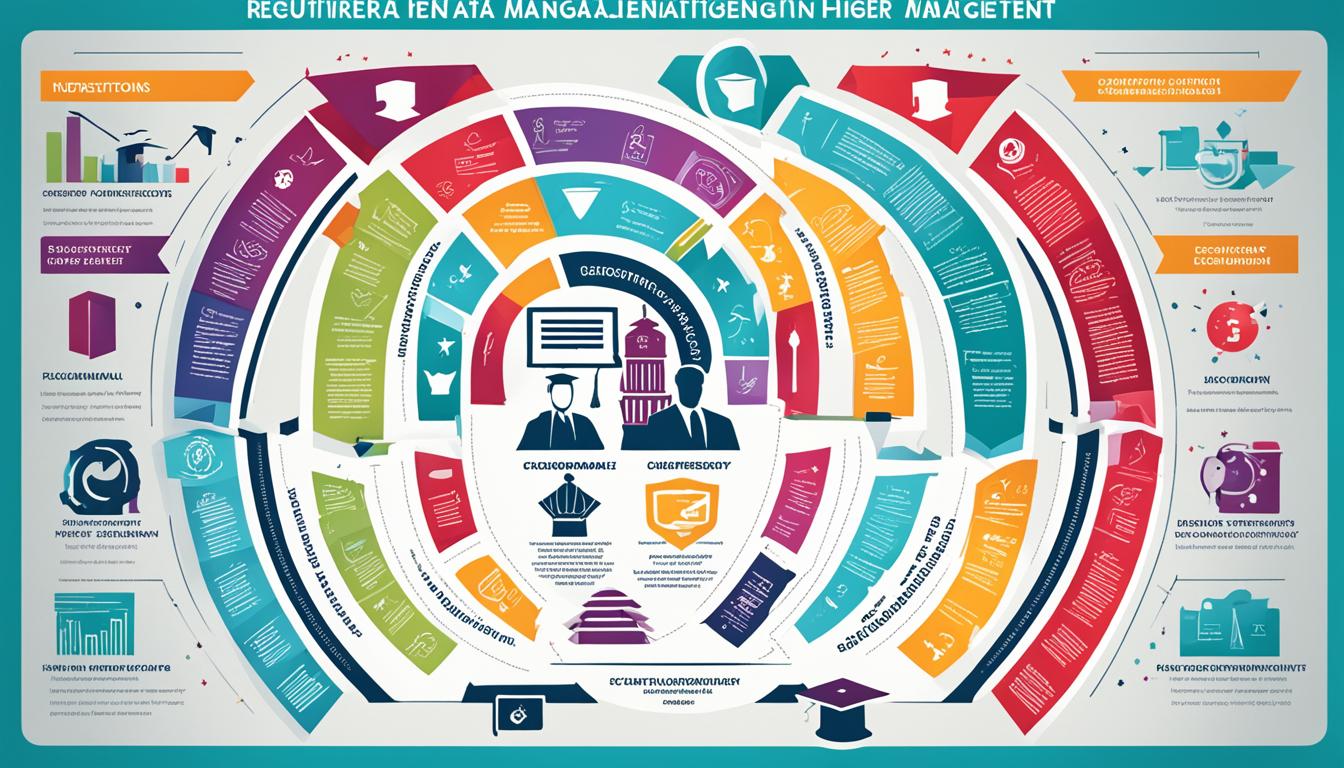What if your school’s reputation could make or break its future? In today’s competitive world, managing your school’s reputation is key for growth and success1. Let’s explore how schools handle this important part of their success.
Reputation is more than just a buzzword in education. It’s a powerful tool that draws top talent, boosts enrollment, and lets schools charge more2. But, with great power comes great responsibility. Schools face risks to their reputations.
A strong reputation means loyal students, engaged alumni, and more funding chances. Yet, many schools struggle to use formal reputation management strategies1. We’ll look into this gap in our case studies.
We’ll check out how top schools in Bandung and universities worldwide handle reputation management. We’ll see successes and setbacks, learning from each case13.
Key Takeaways
- Reputation management is crucial for educational institutions’ growth and sustainability
- Strong reputations can lead to premium pricing and better talent attraction
- Many schools lack formal integration of reputation management strategies
- Case studies reveal both successful and challenging reputation management practices
- Effective reputation management can provide a sustainable competitive advantage
Introduction to Reputation Management in Higher Education
Since the 1970s, managing a university’s reputation has changed a lot. Now, schools see how important their reputation is for making a good impression on people. This includes students, teachers, and others4. The way people see a university is based on how it talks to people and interacts with them4.
A good reputation helps attract students and teachers, and it boosts the school’s ratings4. Today, with the internet, managing a university’s reputation has new ways to deal with challenges. These include the fact that services can’t be touched, the complex nature of reputation, and different opinions from people5.
Managing a university’s reputation means knowing what people think inside and outside the school4. It looks at many parts of the school, like research, working with other countries, and the school’s atmosphere5.
Reputation is the cornerstone of a university’s success in today’s competitive higher education landscape.
Let’s look at the different parts of managing a university’s reputation:
| Area | Key Indicators |
|---|---|
| Research Activities | Publications, citations, research grants |
| International Activity | Student exchanges, international partnerships |
| Social Environment | Campus facilities, student support services |
| Employer Interaction | Long-term cooperation agreements, career guidance activities |
| University Socialization | Media presence, marketing strategies |
By focusing on these areas, universities can make a strong plan for managing their reputation. This helps them avoid risks and stand out in the competitive world of higher education5.
Theoretical Framework: Situational Crisis Communication Theory (SCCT)
SCCT is a key theory for understanding how to handle crisis communication and protect an organization’s reputation. It helps predict how people will see an institution during a crisis. It also guides the choice of the right response strategies.
Studies show that how people see a crisis affects an organization’s reputation. When people think the organization is more to blame for the crisis, its reputation goes down6.
This theory highlights the role of past crises and how well an organization was seen before. If an organization has had ongoing issues or a bad reputation, people will likely blame it more for the crisis. This makes its reputation even worse6.
This framework is useful in both traditional and social media during crises. For example, it has been studied on Facebook and Twitter7.

Recent studies confirm SCCT’s value in different areas. A study looked at 500 Chinese public sector organizations during the COVID-19 pandemic. It found that how people saw the crisis and the response to it greatly affected the organization’s reputation8.
| SCCT Component | Impact on Reputation |
|---|---|
| Crisis Responsibility | Negative correlation |
| Crisis History | Increases initial threat |
| Prior Reputation | Influences threat level |
| Response Strategy | Shapes stakeholder reactions |
By using SCCT, schools can make better crisis response plans. This helps them deal with reputational threats and manage how people react. This approach is based on solid research and helps organizations get through crises without harming their reputation.
Educational Institutions Reputation Management Cases
Public universities face special challenges in managing their reputation. A study in Malaysia showed that 39.3% of students see reputation as key in choosing a school9. This shows how vital it is for schools to manage their reputation well.
Reputation is a big factor, right after job prospects, in picking a school9. Schools with great reputations draw students from all over the world9. This shows how important it is to talk well with stakeholders to keep a good image.

Trust is key when students and parents choose a university9. Schools with strong reputations build trust easily9. This trust helps protect a school’s reputation during tough times. Managing a school’s online image is key to drawing in students and staff9.
For colleges, managing their online image is very important10. It affects things like getting students, grants, and donations10. Schools with a good online image get more students and attract donors and grants10.
| Reputation Management Aspect | Impact |
|---|---|
| Online Content Creation | Shapes public perception |
| Social Media Management | Engages stakeholders |
| Community Engagement | Builds trust and loyalty |
| Video Content | Reaches 92% of audiences |
Schools with top-notch facilities and skilled teachers keep students and staff10. Good reputation management helps schools bounce back from crises10. People are more likely to forgive schools for first-time mistakes10.
Strategies and Tactics Employed in the Case Studies
We looked into how schools handle their reputation during crises. One school used a rebuild strategy, telling stakeholders and changing policies. The other used a victimage strategy, putting blame on someone else and showing possible losses.
Both methods matched parts of the Situational Crisis Communication Theory (SCCT). The rebuild strategy aimed to fix relationships and trust. The victimage strategy tried to blame someone else and lessen damage to the reputation.

Good communication with stakeholders was key in both cases. Schools used many ways to talk to students, teachers, and the public. Social media was a big part, with 62.6% of people worldwide using it11.
The studies showed the need for specific strategies. For example, colleges showed off their academic success and famous alumni to draw in students11. This worked well, as 84% of online students felt more sure of their choices after finishing courses from respected schools12.
| Strategy | Tactics | Effectiveness |
|---|---|---|
| Rebuild | Informing, adjusting policies | High |
| Victimage | Attribution of blame, loss reminders | Moderate |
These examples highlight the importance of knowing your audience and setting clear goals. A smart marketing plan can bring lasting success and a good return on investment11. The case method, started by Harvard Business School in 1922, is still a strong tool in teaching business, with 74% of online learners saying it works well12.
Outcomes and Impact on Institutional Reputation
Our research shows big differences in how schools handle their reputations. Almost 8 out of 10 colleges have faced a major issue that affected their image13. This shows how important it is to manage your reputation well.
Schools that worked on rebuilding and sharing accurate info did better at keeping their good name. But, those that pointed fingers at others lost a lot of trust. This led to losing students and recognition from professional groups.

How schools manage their reputation affects how many international students they get. In Australia, the education sector was worth $32 billion in 2017. By June 2019, there were 630,247 international students14. But, some Australian schools lost students because of bad reputation issues.
Good reputation management can bring big wins. A study showed that a school’s good name and image make students want to work with them later15. This shows why keeping a strong good name is key.
| Aspect | High Performers | Non-High Performers |
|---|---|---|
| Formal ERM Process | 85% | 59% |
| Positive Board Engagement | 82% | 53% |
Top schools often have strong Enterprise Risk Management (ERM) processes and active boards, as shown in the table above13. These things help a lot with keeping a good reputation and protecting your good name.
Lessons Learned and Best Practices
We’ve learned a lot from our study on how schools handle their reputation. It’s clear that managing crises well and understanding situations deeply matters. Schools need to keep up with the digital world’s fast pace.
One big lesson is how important being seen online is. A huge 71% of those who hire people think social media is a good way to check out job seekers16. This shows schools must teach students how to keep their online profiles positive.
When it comes to managing reputation, using many platforms is key. LinkedIn is the top choice for checking out candidates, followed by Facebook, Twitter, and Instagram16. Schools should teach students how to use social media wisely to avoid problems that could hurt their future.
Getting everyone involved in handling crises is crucial. This means students, teachers, and future employers. The use of AI to check social media for job candidates highlights the need for good online reputation management16.
Here are some top tips for schools:
- Start proactive programs to manage your reputation
- Teach social media skills
- Set clear rules for online actions
- Keep an eye on and fix any online issues
Companies are now focusing more on managing knowledge, with roles like Chief Knowledge Officers becoming more common17. Schools can learn from this, focusing on sharing best practices to improve their online reputation.
By following these tips, schools can handle the digital world’s challenges better and keep their reputations strong.
Conclusion
Our research shows how important it is for colleges to manage their reputation well. Schools with good reputations draw in more students and stay ahead18. This means they need to plan carefully, focusing on keeping a strong reputation.
Leaders at the top play a big part in how a school is seen. Things like being fair, open, and good at solving problems affect how people view the school19. These points show how key it is to be ready for crises and have strong leadership to keep a school going strong.
People looking at a school see different things as important. Investors care about how well the school is run, while students and parents look at the quality of education18. This helps schools know how to manage their reputation to meet the needs of different people.
With more schools opening, managing a good reputation is more critical19. Future studies should look into making special plans for managing a school’s reputation, especially for schools in less developed areas. By using these strategies in their plans, colleges can do better and compete well in a tough field.
FAQ
What is reputation management in higher education?
What is the Situational Crisis Communication Theory (SCCT)?
What were the crisis management approaches taken by the two Nigerian universities studied?
How did the crisis management strategies impact the universities’ reputations?
What are the key lessons learned from the case studies?
Why is reputation management important for higher education institutions?
What are the recommendations for future research?
Source Links
- PDF – https://ejournal.insuriponorogo.ac.id/index.php/qalamuna/article/download/5037/3001/
- Reputation and Its Risks – https://hbr.org/2007/02/reputation-and-its-risks
- Learn How Education Leadership Improves Student Learning – https://wallacefoundation.org/sites/default/files/2023-07/How-Leadership-Influences-Student-Learning.pdf
- Frontiers | Reputation in Higher Education: A Systematic Review – https://www.frontiersin.org/journals/education/articles/10.3389/feduc.2022.925117/full
- PDF – https://www.atlantis-press.com/article/125940220.pdf
- Protecting Organization Reputations During a Crisis: The Development and Application of Situational Crisis Communication Theory – Corporate Reputation Review – https://link.springer.com/article/10.1057/palgrave.crr.1550049
- The Situational Crisis Communication Theory Applied To The Crisis Response On Facebook And Twitter In The Case Of The Germanwings Flight U9525 – https://essay.utwente.nl/75165/1/Falko Verwer_MA_BMS.pdf
- Exploring the Antecedents to the Reputation of Chinese Public Sector Organizations During COVID-19: An Extension of Situational Crisis Communication Theory – https://www.ncbi.nlm.nih.gov/pmc/articles/PMC9234479/
- 3 Reasons Online Reputation Management Matters for Universities – Reputation – https://reputation.com/resources/articles/online-reputation-management-matters-for-universities/
- Online Reputation Management for Higher Education Institutions – https://rizereviews.com/online-reputation-management-for-higher-education-institutions-why-its-so-important/
- Mastering Education Marketing: Effective Strategies for 2024 Success – https://wearecsg.com/blog/education-marketing-strategies-trends/
- 5 Benefits of the Case Study Method | HBS Online – https://online.hbs.edu/blog/post/case-study-method
- Facing the challenge of reputation management in higher education – https://www.origamirisk.com/resources/blog-post/facing-challenge-reputation-management-higher-education
- Managing risks to reputation in educational institutions – Safetrac – https://www.safetrac.com.au/managing-risks-to-reputation-in-educational-institutions/
- Microsoft Word – ISD-EMSTOKYO-07126-2813 – https://www.worldresearchlibrary.org/up_proc/pdf/591-14871495788-12.pdf
- Online Reputation Management for University/College Students – Recover Reputation – https://www.recoverreputation.com/online-reputation-management-for-university-college-students/
- Evaluation, knowledge management, best practices, and high quality lessons learned – https://www.sciencedirect.com/science/article/abs/pii/S1098214001001473
- PDF – https://repository.nwu.ac.za/bitstream/handle/10394/10124/Tshabangu_Joseph_Chapter_2.pdf?sequence=5
- TF_Template_Word_Windows_2007 – https://dergipark.org.tr/tr/download/article-file/2389243

